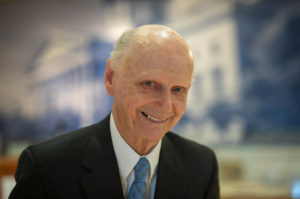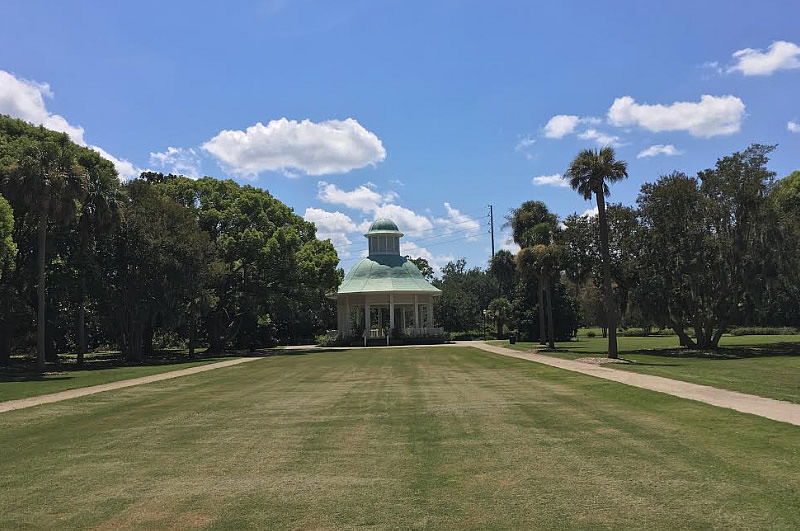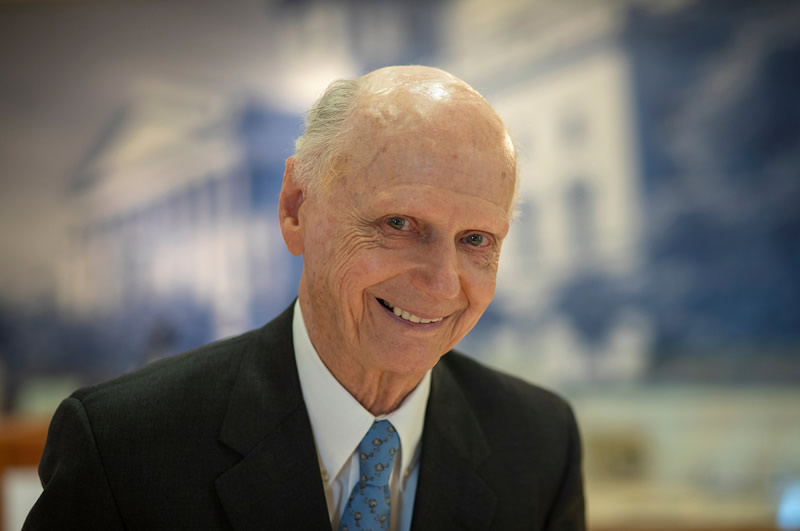NEWS: Teacher group pushes educators to advocate more
NEWS BRIEFS: Lawmakers work again on tax conformity, more
CALENDAR: House subcommittees scheduled to meet
COMMENTARY, Brack: Riley, paragon of decency in leadership, shines right path
SPOTLIGHT: S.C. Hospital Association
MY TURN, Knapp: Dominion’s ad campaign clouds coming PSC rate rollback decision
FEEDBACK: House Dems say they’ve long been pushing for dropout solutions
MYSTERY PHOTO: Distinctive green roof is memorable
S.C. ENCYCLOPEDIA: Richard W. Riley
NEWS
NEWS: Teacher group pushes educators to advocate more

By Lindsay Street, Statehouse correspondent | A new South Carolina group of educators says teachers in the Palmetto State don’t want to walk out like peers around the nation who are fighting for higher pay. But the group says it is putting pressure on the General Assembly to raise wages that long have been lower than average.
Members of the group, SCforEd, say it is working to unify teacher voices in the state while pushing for lawmakers to fix teacher pay and education funding.
“First and foremost we want our voice at the table. A lot of decisions are made by people who are not in the classroom,” SCforEd founder and Blythewood High School teacher Lisa Ellis said. “Our goal is to prevent walking out … (and) getting people advocating for themselves.”
SCforEd started as a Facebook group in May. Since then, the group has grown to more than 15,000 educators. For perspective, there are an estimated 49,475 public school teachers in South Carolina, according to Education Week.
The group initially started to help teachers talk about their struggles, but now the group is focused on political and legislative action, such as hosting candidate town halls and seeking to drive policy decisions.
There are two teacher associations already in the state: The S.C. Education Association (SCEA) and Palmetto State Teachers Association (PSTA). Ellis said SCforEd’s advocacy efforts won’t be backed by dues, but will partner with the associations on advocacy. For example, SCforEd partnered on the SCEA’s May rally at the Statehouse for better teacher pay, according to SCEA spokesman Skot Garrick. PSTA’s Executive Director Kathy Maness told Statehouse Report that she has met with Ellis and has attended the group’s Midlands caucus earlier this summer.
While SCforEd says it has more than 15,000 followers, the PTSA has about 13,000 members. Membership numbers for The SCEA were not available, according to Garrick.
Solutions for dropouts
After Statehouse Report’s Aug. 3 story about the state’s increased dropout rate, some educators responded with the hashtag #SCforEd, encouraging lawmakers to ask teachers for solutions.
SCforEd volunteer Nicole Walker of Blythewood said curbing dropouts comes down to having good teachers who aren’t working multiple jobs or tasked with wrangling 35 students in a classroom.
“Relationships are the key,” said Walker, who works at Ridge View High in Richland School District 2. “(If) you increase class sizes due to lack of funding, you inhibit the personal relationships teachers can build with students that might be the key to keeping a student in school.”
She also noted that public schools in South Carolina fail to meet the American School Counselors Association’s recommendation for guidance counselors, psychologists or social workers.
“The thing most of the people in our group keep coming back to is, because we have not met our financial requirements each year, what you’ve seen is fewer teachers, more overcrowded classrooms and you don’t have all the counseling staff in place … all of these things that would impact a dropout rate based on our lack of funding,” Walker said.
Policy push
Lawmakers included a 1 percent salary increase and bumped the starting salary of teachers in this year’s budget, seeking to an exodus of educators. But Walker said that with inflation, the raise will do little to help teachers.
She said that inflation is at 2.5 percent, which means a 1 percent increase isn’t even a “cost-of-living raise.” She added that increased insurance costs have also eaten into the pay increase.
“You’re really experiencing a cut,” she said.

Ellis said SCforED is realistic about expectations and realizes the state only has so much money to go around. Last week, members of SCforEd talked with State Superintendent of Education Molly Spearman. Walker said they talked about a 5 percent raise in the broader context of making the teaching profession better and classroom discipline.
“Every kid deserves to have a teacher that is rested and ready and focused on them,” Ellis said. And teachers can’t do that if they are working second or third jobs to pay the bills, she added.
Also on SCforEd’s agenda is ensuring administrative follow-through on student discipline and encouraging educators to vote. Ellis said educators tend to not participate in elections, but that elected officials, from the local school board up through federal office, have big implications on their jobs.
Walker said the group will have a statewide caucus Sept. 29 at University of South Carolina College of Education in Columbia where former educator S.C. Sen. Mike Fanning, D-Fairfield, will be the keynote speaker.
At the caucus, there will be experts to discuss how to the group can further advocate for educators in the state.
“That’s going to be the push into October and trying to start meeting with legislators in that pre-file season so they come into January with understanding what our needs are,” Walker said.
- Have a comment? Send to: feedback@statehousereport.com
NEWS BRIEFS
BRIEFS: Lawmakers work again on tax conformity, more
By Lindsay Street, Statehouse correspondent | State lawmakers will need to decide whether to align the state’s tax code with the federal government’s before the 2019 session begins, according to the state’s top tax chief Hartley Powell.
![]() During a Senate Finance Subcommittee on Conformity hearing on Wednesday, Powell urged for legislators to approve “conformity,” which saves taxpayers time and money, but also aids in compliance and won’t negatively impact state revenues. The House and the Senate ended the session with separate bills, both of which aligned the state’s tax code to the federal code with slight modifications to avoid a tax increase.
During a Senate Finance Subcommittee on Conformity hearing on Wednesday, Powell urged for legislators to approve “conformity,” which saves taxpayers time and money, but also aids in compliance and won’t negatively impact state revenues. The House and the Senate ended the session with separate bills, both of which aligned the state’s tax code to the federal code with slight modifications to avoid a tax increase.
Powell said delaying legislative action until January could cause significant delays for those residents looking to file taxes early, saying it would “create a chaotic situation for South Carolina taxpayers.”
Lawmakers are expected to return in September to address Gov. Henry McMaster’s vetoes, but it’s unclear whether the subcommittee will be able to finish its work before that time.
Lawmakers on the subcommittee appeared to agree with Powell on moving forward quickly.
“We definitely need to this just as quick as possible if we can get the legislature back in session,” said Sen. Ronnie Cromer, R-Lexington.
Subcommittee leader Sen. Thomas Alexander, R-Oconee, said the group “understands the importance of moving forward with this in a timely manner.”
The next meeting for the subcommittee has not been scheduled as of today.
Previously, lawmakers have floated tying in tax conformity with tax reform, but Powell cautioned against that Wednesday, saying he didn’t want debate on tax reform to further delay conformity.
Read our previous coverage on tax conformity here:
- How state responds to federal tax overhaul will have big impact;
- House bill to conform tax code is more progressive;
- Lawmakers look reforming the tax code along with conformity; and,
- Legislators mum on possible unintended tax hike.
Here’s what else happened this week:
Tariff impact. Fairfield County will lose yet another manufacturer with the demise of Element TV in Winnsboro. The company blamed President Trump’s tariffs on Chinese goods, which raised the price of its manufacturing components. It will lay off 126 employees. Gov. Henry McMaster called the plant’s closure “a sad moment.” In 2017, Fairfield County already saw a textile mill close and the loss of thousands of jobs at the V.C. Summer Nuclear Plant in 2017.
Four more say no to snow days. The state Education Oversight Commission approved four additional school districts this week to take part in an eLearning pilot program that has children do online learning when they can’t make it into school due to inclement weather. The five school districts taking part in the program are: Anderson 5; Kershaw; Pickens; Spartanburg 1 and Spartanburg 7.
Racial gap in housing. The new report from the Joint Center for Housing Studies of Harvard University showed home ownership by young adults and blacks are at 30-year lows. An NPR story focused on the racial gap of homeownership in the report: While about 72 percent of white people are homeowners, only 43 percent of blacks are homeowners. The racial gap varies widely on geography, however. An excerpt:
“When broken down by city, some places do worse than others. Minneapolis, for instance, ranks the worst in the country with a homeownership gap of 50 percent. Albany, N.Y., and Salisbury, Md., are not far behind. Charleston, S.C., and Austin, Texas, are around 20 percent.”
New job. Fred Jones of Walterboro, a former staffer for U.S. Rep. Jim Clyburn, is the new director of government relations for the Southern Education Foundation, based in Atlanta. More.
AHEAD: House subcommittees scheduled to meet
Staff reports | The House Legislative Oversight Committee is kicking into gear Monday with a slew of subcommittee meetings in the coming weeks. Most of the subcommittee meetings are regularly scheduled follow-ups on legislative reports.
![]() Here are the coming subcommittee meetings:
Here are the coming subcommittee meetings:
- Economic Development, Transportation and Natural Resources subcommittee meets 10 a.m. Monday, Aug. 13, in room 110 of the Blatt building.
- Law Enforcement and Criminal Justice subcommittee meets 11 a.m. Tuesday, Aug. 14, in room 110 of the Blatt building.
- Education and Cultural subcommittee meets Thursday, Aug. 16, in room 317 of the Blatt building.
- Law Enforcement and Criminal Justice subcommittee meets 11 a.m. Monday, Aug. 20, in room 110 of the Blatt building.
- Healthcare and Regulatory subcommittee meets 11 a.m. Thursday, Aug. 30, in room 110 of the Blatt building.
- Click here to see more meetings for this committee.
Also next week, the House Ethics Committee meets and will address a fine appeal from Democratic candidate for House District 123 Mario Martinez. House District 123 is currently held by Republican Jeff Bradley. The two face off in November’s general election. Read the agenda here.
BRACK: Riley, paragon of decency in leadership, shines right path

By Andy Brack, editor and publisher | Good old-fashioned decency in political discourse is a rarity in these times of electronic and highly-partisan discontent.
 But good old-fashioned decency was on full display Aug. 6 in Columbia as the University of South Carolina commemorated the life and work of former Gov. and U.S. Secretary of Education Dick Riley during the official opening of his political collection. Part of it is now on public exhibition in the Ernest F. Hollings Special Collections Library and includes thousands of photographs, speeches, notes and more that give insights into Riley, a quiet lion of a leader.
But good old-fashioned decency was on full display Aug. 6 in Columbia as the University of South Carolina commemorated the life and work of former Gov. and U.S. Secretary of Education Dick Riley during the official opening of his political collection. Part of it is now on public exhibition in the Ernest F. Hollings Special Collections Library and includes thousands of photographs, speeches, notes and more that give insights into Riley, a quiet lion of a leader.
“Politics can be a wonderful thing and it can be an unpleasant thing,” Riley, now 85, told a crowd of more than 600 people gathered to honor him. “But I hope they will see in this exhibit, which will be a tremendous exhibit, that you can be a politician and be into issues and not bringing people down.”
Former President Bill Clinton tapped Riley to serve as his secretary of education in 1993 because of his success in moving South Carolina forward in education in the early 1980s. Riley and a dedicated band of supporters pushed through passage of the Education Improvement Act, which boosted teacher pay, improved accountability and pumped billions of dollars into public education over the last three decades.
Clinton wanted a change-maker like Riley to target education nationally.
“I believed that the future of the country depended upon our ability to educate everyone,” he said. “And I knew that he believed that ability is evenly distributed, but opportunity is not.”
The key to Riley’s long, effective leadership has been his decency and how he treats everyone, even those with whom he disagrees, as individuals, not enemies.
“When we give that up, we have given up everything that makes democracy possible,” the president said.
Clinton said Riley, one of the most widely-regarded and successful Cabinet officials of the 20th century, made good leadership look easy.
“Always had a smile on his face, always treating people like they were people.”

Riley, who declined an offer by Clinton to serve on the U.S. Supreme Court because he wanted to keep focusing on education, continues to push for education improvements. After serving eight years as education secretary, he returned to South Carolina and founded the Riley Institute at Furman University, which focuses on programs to improve schools, expand diversity and develop more principled leaders.
Riley said South Carolina leaders needed to renew a commitment to excellence in public education.
“The money we spend on K-12 [education] is low, obviously, in comparison with other states. It’s important to have a focus on trying to enhance that amount, but it’s important also, when you do that, to support interesting things like how, in a conservative way, do you operate schools, do you handle the administration of schools?” he said.
“The EIA was really a radical thing in its time. It was a movement, and I think we need another movement. I would like to see that right now.”
The still-active former governor also urged people to work together as a village, a nod to Hillary Clinton’s book, “It Takes A Village.”
“We all must continue to dream. And to work as a village together,” he said in closing remarks. “Work, remember this, for the public good. That says an awful lot.
“If all of us work for the public good, we’ll move in the right direction. I am absolutely convinced of that. Working toward peace, towards a happy, meaningful, healthy, safe life for everyone – and certainly a high-quality education for every single child and every adult in South Carolina and in Arkansas and throughout this great nation of ours.”
South Carolina and the nation need more leaders like Dick Riley today – Democrats, Republicans and independents who calmly collaborate, talk, share ideas, explore possibilities and work for lasting change to help everyone. In short, we need more people to be decent and act in the public interest. What we don’t need are more elected officials who operate in the safety of shadows, furtively punching mobile phones in the wee hours of the night.
- Have a comment? Send to: feedback@statehousereport.com.
SPOTLIGHT
SPOTLIGHT: S.C. Hospital Association
 The public spiritedness of our underwriters allows us to bring Statehouse Report to you at no cost. This week’s spotlighted underwriter is the South Carolina Hospital Association, the Palmetto State’s foremost advocate on healthcare issues affecting South Carolinians. The mission of SCHA is to support its members in addressing the healthcare needs of South Carolina through advocacy, education, networking and regulatory assistance.
The public spiritedness of our underwriters allows us to bring Statehouse Report to you at no cost. This week’s spotlighted underwriter is the South Carolina Hospital Association, the Palmetto State’s foremost advocate on healthcare issues affecting South Carolinians. The mission of SCHA is to support its members in addressing the healthcare needs of South Carolina through advocacy, education, networking and regulatory assistance.
Founded in 1921, the South Carolina Hospital Association is the leadership organization and principal advocate for the state’s hospitals and health care systems. Based in Columbia, SCHA works with its members to improve access, quality and cost-effectiveness of health care for all South Carolinians. The state’s hospitals and health care systems employ more than 70,000 persons statewide. SCHA’s credo: We are stronger together than apart.
- To learn more about SCHA and its mission, go to: http://www.scha.org.
MY TURN, Knapp: Dominion’s ad campaign clouds coming PSC decision

By Frank Knapp, special to Statehouse Report | It’s good news for consumers that a federal judge last week ruled the state Public Service Commission (PSC) can temporarily reduce utility rates by 15 percent by S.C. Electric & Gas Company ratepayers following the failed construction of nuclear plants in Fairfield County.

But that ruling isn’t as important as what happens next — the legislatively-mandated ruling by the PSC in December about any permanent rollback of SCE&G’s rates, a ruling that has consequences for its suitor, Dominion Energy.
Dominion has flooded TV and radio with ads. The apparent intent is to convince the public that its offer to acquire SCANA/SCE&G is the best deal for ratepayers to permanently resolve the financial crisis of paying for the abandoned nuclear plants in Fairfield County.
SCE&G ratepayers have seen their electric bills increased by 18 percent since 2009 and collectively have shelled out over $2 billion in higher utility rates because of this nuclear debacle.
According to the ads, Dominion promises to give the average family a check for $1,000 as a rebate for past SCE&G rate hikes associated with the nuclear plant construction. In addition, Dominion promises to rollback electric rates by 5 percent, not counting an additional 2 percent from corporate tax cut savings.
However, this “generous” offer is available only if the PSC approves Dominion’s purchase of SCANA/SCE&G and allows the Virginia-based utility to continue charging for much of the abandoned nuclear plant construction debt.
That’s what Dominion’s multimillion-dollar marketing campaign is now about—influencing the seven Commissioners of the PSC.
In November, the PSC is scheduled to hold one hearing to combine two issues—how much SCE&G’s electric rates should be permanently rolled back and whether Dominion should be approved for acquiring SCANA/SCE&G.
Dominion’s calculation is that the PSC won’t want to deprive the SCE&G customers of its “generous” cash-back and rate rollback offer if it is popular with the public. With this concern on their minds, the Commissioners might be more reluctant to roll back rates too much resulting in Dominion dropping its “generous” offer to take over SCANA/SCE&G.
But exactly how “generous” is Dominion’s offer?
Most ratepayers think that they are average and would receive the $1,000 Dominion check. But depending on how “average” is calculated, most families would get less than the $1,000, possibly far less. Dominion hopes your knowledge of math isn’t that great.
Dominion acknowledges that $1 billion of the $1.3 billion it will use to write those customer checks is coming from a settlement with Toshiba, money that was already to be used to pay back ratepayers. How generous is it to take credit for giving the customers money they were already supposed to receive?
Thousands of SCE&G customers will not get any check because Dominion says they would not be “eligible.” An “eligible” customer, according to Dominion, is one who is an SCE&G ratepayer as of the date Dominion takes over SCANA/SCE&G (the end of 2018 or early 2019) and who had SCE&G electricity service in 2016. So, if a ratepayer has had SCE&G service but will not have that service when Dominion officially buys SCANA/SCE&G, there will be no check. If a ratepayer continues with SCE&G service into 2019 but was not an SCE&G customer in 2016, there will be no check.
It also turns out that Dominion’s $1,000 cash-back offer was only two-thirds of what it was willing to do. According to state legislators, the utility was willing to increase the offer to $1,530 for an average customer rebate if it got concessions from the General Assembly. Legislators refused to be blackmailed and Dominion took back the extra $530 per average family offer.
Then there is Dominion’s offer of a 7 percent rollback in electric rates. This is less than half of the 15 percent temporary rollback ordered by the Legislature, approved by the PSC and refused to be blocked by a judge.
The same logic that went into the decision for this 15 percent temporary rate reduction will also be used to pursue a PSC order for a permanent 15 percent or more rate rollback.
But that PSC decision is in jeopardy as long the Dominion proposal to acquire SCANA/SCE&G is on the same PSC’s docket as the SCE&G rate rollback.
The ratepayers deserve the undivided and Dominion-free attention of the PSC when it rules on SCE&G rates. The “generous” Dominion offer should not influence this critically important decision by the Commissioners.
The PSC rate reduction hearing and ruling should thus come first without Dominion’s input or even sitting at the table to put pressure on the Commissioners. Only then should the PSC hold a hearing on Dominion’s desire to gobble up SCANA/SCE&G.
Knapp is the president and CEO of the S.C. Small Business Chamber of Commerc. You can contact him at fknapp@scsbc.org.
- Have a comment? Send it to: feedback@statehousereport.com.
FEEDBACK
FEEDBACK: House Dems say they’ve long been pushing for dropout solutions
To the editor:
![]() In a recent Statehouse Report article authored by Lindsey Street, titled “Lawmakers look for ways to cut school dropout rate,” Republican lawmakers were cited pushing for a change in compulsory school attendance laws to combat the recent uptick in the number of high school dropouts. Interestingly enough, the article made no mention of Democrats, who have consistently been the primary sponsors of such legislation for the past nearly eight years.
In a recent Statehouse Report article authored by Lindsey Street, titled “Lawmakers look for ways to cut school dropout rate,” Republican lawmakers were cited pushing for a change in compulsory school attendance laws to combat the recent uptick in the number of high school dropouts. Interestingly enough, the article made no mention of Democrats, who have consistently been the primary sponsors of such legislation for the past nearly eight years.
Legislation introduced by me and fellow Democrats Wendell Gilliard, David Mack, Robert Brown, Bill Clyburn, Lonnie Hosey, Terry Alexander, Leola Robinson-Simpson and several others, going back to the 119th session of the General Assembly, has been consistently held up in committee for various reasons. However, slowly but surely, the list and diversity of co-sponsors have grown over the past four years gaining bipartisan support.

The need for such legislation is clear considering the fact that under current law, though parents have a legal responsibility to take care of their child until they are 18, the law allows the child to make the decision to not attend school upon reaching 17 years of age.
The idea behind the bill, which we plan to pre-file again the upcoming session, would not only give parents important leverage as providers but, more importantly, allow school districts the opportunity to develop alternative routes such as apprenticeships, school-to-work and other initiatives that hopefully provide an alternate path to some useful skill and or job that would keep students from falling through the cracks or worse, entangled in the criminal justice system by dropping out.
There is a solution [to curbing dropout rates], but it is going to take collaboration between educational leaders, policy-makers, the business community and parents working together to make it happen. Failure is simply not an option.
It’s time to put internal and external politics aside and do what’s right for our youth. The time is right, the need is great and the reasons are compelling. Welcome to the team.
— S.C. Rep. Jerry Govan, D-Orangeburg. [Govan is ranking member of the S.C. House Education and Public Works Committee; He also is chair elect of the S.C. Legislative Black Caucus.]
Lots of solutions to lower dropout rate
To the editor:
There are many options to use while educating students who fall into this 17- to 18-year-old situation.
Utilizing more career and vocational training along with internships and mentoring is critical. School administrators need to become more creative in utilizing technical two-year colleges in their areas so students can have more dual-credit opportunities than the regular science, English and math that are normally being offered.
Finally, and most importantly, some educators are going to have to adjust their thinking on how they work and view this group of students. “It will mean many educators and administrators coming out of their comfort zones!
— Mark Epstein, Mount Pleasant, S.C. [Mr. Epstein is a retired counselor and teacher of at-risk students in Charleston County.]
Send us your thoughts. We love hearing from our readers and encourage you to share your opinions. But you’ve got to provide us with contact information so we can verify your letters. Letters to the editor are published weekly. We reserve the right to edit for length and clarity. Comments are limited to 250 words or less. Please include your name and contact information.
- Send your letters or comments to: feedback@statehousereport.com
MYSTERY PHOTO: Distinctive green roof is memorable

So this photo mystery might tease your brain a bit. Where is this structure and why was it erected? Send your guess to: feedback@statehousereport.com. And don’t forget to include your name and the town in which you live.
Our previous Mystery Photo
 Our Aug. 3 mystery got the neurons flowing for a dozen photo sleuths who correctly identified it as the Haig Point Lighthouse on Daufuskie Island, an eight-square mile island between Hilton Head Island and Savannah.
Our Aug. 3 mystery got the neurons flowing for a dozen photo sleuths who correctly identified it as the Haig Point Lighthouse on Daufuskie Island, an eight-square mile island between Hilton Head Island and Savannah.
According to a website about the island, the island’s name is of Muscogee origin and means “sharp feather” because of its shape.
But something we heard recently that was even more interesting – meaning it may or may not be true — was that the world “daufuskie” might be a Gullah interpretation of “the first key” or island. Daufuskie is a long way from the Florida Keys, but it’s something to consider. Anybody know more about this theory?
Congratulation to the most recent gaggle of Mystery Photo sleuths: Philip Cromer of Beaufort; Tray Hunter of Bluffton; Jay Altman, Bet Tarrant and Elizabeth Harmon, all of Columbia; Dale Rhodes of Richmond, Va.; George Graf of Palmyra, Va.; Don Clark and Bill Segars, both of Hartsville; Wayne Beam of North Myrtle Beach; Steve Willis of Lancaster; and Harvey Shackelford of Newberry.
Graf provided more context on the lighthouse: “According to scrimshawgallery.com, [it was] built in 1872 by the U.S. Lighthouse Board. Haig Point Lighthouse blinked its first light on Oct. 1, 1873. It was constructed as a guide to captains navigating the shifting sand shoals off the north end of Daufuskie Island as they negotiated the channel between Savannah and Port Royal. Two separate beacons served as a range for Calibogue Sound.
“The structure was built on the tabby foundations of an old plantation house and served sixty or more years before being decommissioned in 1934, after which it fell into a state of disrepair. The house survived years of neglect and a kitchen fire that could have burned the whole structure to cinders. The house in its carefully preserved state has considerable charm and now serves as a place to hold special receptions and as a tastefully decorated inn. The totally renovated lighthouse is again a functional navigational light.”
- Send us a mystery: If you have a photo that you believe will stump readers, send it along (but make sure to tell us what it is because it may stump us too!) Send to: feedback@statehousereport.com and mark it as a photo submission. Thanks.
S.C. ENCYCLOPEDIA
HISTORY: Gov. Richard W. Riley

S.C. Encyclopedia | Richard Wilson Riley was born on January 2, 1933, in Greenville, the son of Edward Patterson Riley and Martha Dixon. He attended public grade schools in Greenville and was graduated from Furman University in 1954. After college Riley entered the U.S. Navy, serving from 1954 to 1956. While in the navy he was diagnosed with spondylitis, a painful bone disease that caused his spine to curve forward and left him unable to turn his neck. He was determined to pursue an active career, however, and in 1956 entered law school at the University of South Carolina, graduating in 1959. In 1957 he married Ann Osteen Yarborough, with whom he later had four children. In 1960 he joined his father’s Greenville law firm.
In 1962 Riley was elected to the state House of Representatives as a Democrat from Greenville. He served until 1966, when he won election to the state Senate. During his ten years in the Senate, Riley was considered a “young Turk,” one of a group of progressive, reform-minded legislators who pushed causes such as judicial reorganization, home rule, constitutional revision, equitable financing for school districts, and peaceful desegregation of public schools. Riley declined to seek reelection in 1976, but he captured the 1978 Democratic gubernatorial nomination in a runoff and won the general election with sixty-one percent of the vote.
After assuming office on January 10, 1979, Riley pressed reform causes such as merit selection of the state’s Public Service Commission, limitation of nuclear waste dumping in South Carolina, aid for the medically indigent, and a change to the state constitution that would allow a sitting governor to serve a second term. The latter change gained legislative and public approval. As a result, Riley became the first South Carolina governor in history to serve consecutive four-year terms. Reelected on November 2, 1982, with some seventy percent of the vote, Riley capitalized on his popularity to launch his most ambitious reform, a comprehensive effort to overhaul the state’s public school system.
Long an advocate of public schools, Riley made education reform the priority of his second term. After the General Assembly rejected his first legislative package in 1983, Riley changed his approach and sought the ideas of thousands of South Carolinians who turned out at forums designed to solicit public input. Through intense lobbying he gained the support of business leaders and educators for a longer school day, merit pay for teachers, and school accountability measures. A keystone of the plan, which came to be known as the Education Improvement Act (EIA), was a one-cent hike in the state’s sales tax to fund the reforms. Riley’s sweeping education package received grassroots support across the state. Despite determined opposition, the General Assembly approved the EIA in June 1984. It was acclaimed as the most comprehensive school reform package ever enacted at one time and a model of education reform.
After leaving the governor’s office in early 1987, Riley joined the influential law firm Nelson, Mullins, Riley and Scarborough of Columbia, Greenville, and Myrtle Beach. However, the success of his education reform efforts cemented his reputation as one of the nation’s leading public school advocates. Following the election of former Arkansas governor Bill Clinton as president in 1992, Riley was named U.S. secretary of education.
President Clinton charged Riley with launching a national school reform effort similar to that enacted in South Carolina. He unveiled a legislative package designed to set national standards for students and teachers and provide incentives for schools to meet them. It included improvements in federal school aid for needy children, direct loans for college-bound students, and a program to encourage parental involvement in their children’s schooling. When Republicans gained control of Congress in 1994, they set out to eliminate the Department of Education. But Riley’s efforts and popular support for public education ultimately strengthened the department. By the end of Clinton’s second term, Riley had helped the Department of Education reach record levels of federal education spending. After eight years in the post of secretary of education, Riley was hailed in the national press as “one of the great statesmen of education” in the twentieth century and “one of the most decent and honorable men in public life.” In 2001 he returned to South Carolina, where he continued to advance education issues through professorships at Furman University and the University of South Carolina.
- For more on Riley’s leadership in recent years, see the Riley Institute at Furman University.
— Excerpted from an entry by Henry H. Lesesne. To read more about this or 2,000 other entries about South Carolina, check out The South Carolina Encyclopedia, published in 2006 by USC Press. (Information used by permission.)
DONATE TO STATEHOUSE REPORT
If you like what you’ve been reading, how about considering a contribution so that we can continue to be your watchdog at the S.C. Statehouse. Interested? Just click the image below.
ABOUT STATEHOUSE REPORT
Statehouse Report, founded in 2001 as a weekly legislative forecast that informs readers about what is going to happen in South Carolina politics and policy, is provided to you at no charge every Friday.
- Editor and publisher: Andy Brack, 843.670.3996
- Statehouse correspondent: Lindsay Street
More
- Mailing address: Send inquiries by mail to: P.O. Box 22261, Charleston, SC 29407
- Subscriptions are free: Click to subscribe.
- We hope you’ll keep receiving the great news and information from Statehouse Report, but if you need to unsubscribe, go to the bottom of the weekly email issue and follow the instructions.
© 2018, Statehouse Report. All rights reserved.

















 We Can Do Better, South Carolina!
We Can Do Better, South Carolina!